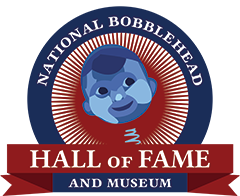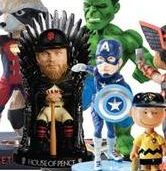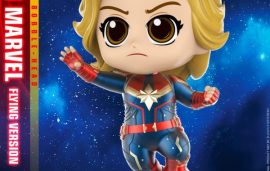
Pepsi Is Using VR And Nostalgia to Send Super Bowl Fans Back in Time By Marty Swant
This weekend, Pepsi is hoping to bring people back to the future via virtual reality.
As an extension to its Super Bowl campaign airing this weekend, Pepsi has created a pop-up VR experience near U.S. Bank Stadium in Minneapolis where visitors can explore a few short scenes based on the brand’s iconic ads of the past. (Adweek initially reported Pepsi’s VR plans on Tuesday evening.) Fans watching at home can view the experience with their own VR headset or through a web-based VR microsite as soon as this week.
The experience, created in partnership with Google, begins by taking the viewer inside an old race car on the streets of an unknown city. The scene, a nod to the 1998 TV spot featuring former race car driver Jeff Gordon, shows a dashboard with the year “2018” to the left and a bobble head of Gordon to the right that bobbles when selected. On the console of the car is a Pepsi Zero Sugar, which, when selected, turns into a bottle of Pepsi Perfect from “Back to the Future.” After that, the viewer is prompted to press the horn, which starts the car racing down a tunnel. Suddenly, a levitating Dolorean zooms past the car, transporting both to the past.
The following scene sends both vehicles to the desert outside of the Halfway House Cafe—the setting for the 1991 ad featuring Cindy Crawford. The building looks like it used to, and there’s a large photo of Crawford (who stars in a 2018 remake of the commercial with her son) in the window. Clicking the photo prompts an “XOXO Cindy” to magically appear in red letters across the image. A few other surprises appear before the viewer is prompted to hop back in the Dolorean and head back to the present, where Pepsi teases out its plans to add more scenes throughout the year.
According to Mike Yapp, chief creative director of Google Zoo, a VR experience allows Google and Pepsi to tap into viewers’ sense perception, which triggers our memories.
“Like you smell something and it brings back a memory or you hear a song and it brings back a memory,” Yapp said. “Sense perception is so strong, that we felt like if what we’re talking about is nostalgia, if what we’re talking about here is going back and seeing what these were about and remembering what Pepsi means to your life then, we thought one of the best experiences you can do digitally is through VR.”
Pepsi’s VR experience is its attempt to experiment more with an emerging medium beyond its traditional channels.
“The challenge with what we’ve done in the past was it was either traditional 360 video or it was VR that was only able to be experienced through [Google] Cardboard or the headset,” said Stacy Taffet, Pepsi’s senior director of marketing. “But now you get a rich experience even if you don’t have the headset.”



